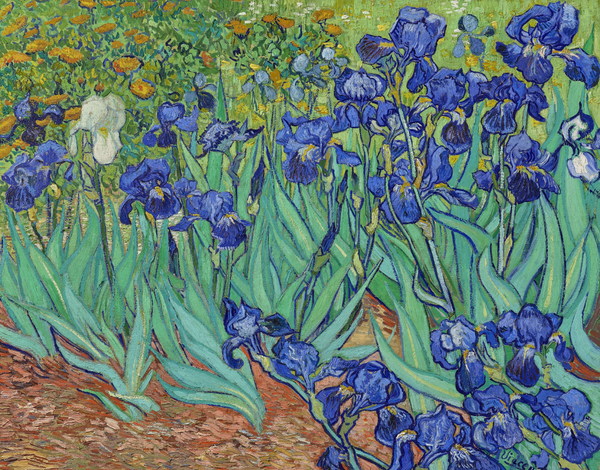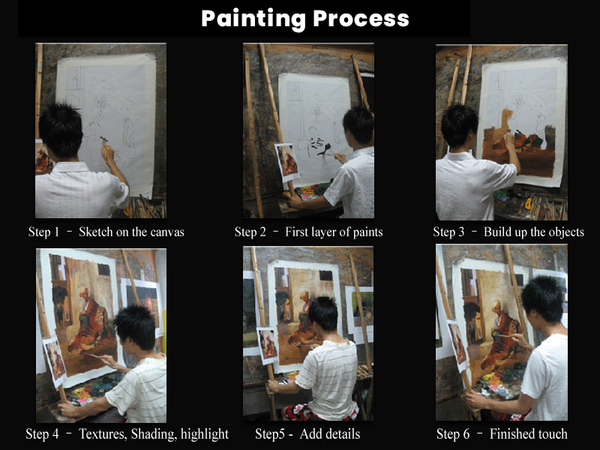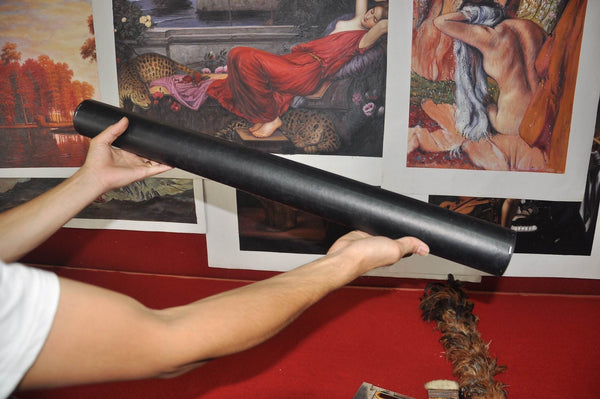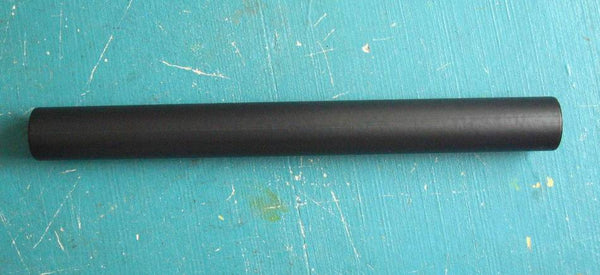The Irises | Van Gogh | 1889 | Small 24" X 20"
*Your order will be shipped only Oil Painting on Canvas rolled in a safe round Mail Tube. Please be noted it is not coming with frame.
** Item will be delivered to the shipping address in 3 weeks since hand-painted ordered item needs to be completed for 2 weeks. Please be advised this turnaround schedule!!
How you get the Hand-Drawn Painting
-From order to deliver
✔️ Order Placed
✔️ Reproduction Artist drawing and Finishing
✔️ Clean-Up the painting
✔️ Cover the painting with Safe Film
✔️ Roll the painting with the safe file
✔️Pack the roll of the painting into the Mailing Tube
✔️Shipping
Your order is hand-painted on canvas artwork , not a printed. it is wrapped in a film to prevent damage to the painting and placed in a round mail tube. We ship this tube to you. So, you will receive a hand-painted painting in the canvas that is unlikely to be damaged. Of course, the work of art will be nearly identical to the original masterpiece.
Once you receive the paintings, you go to a nearby picture frame shop, make a picture frame that matches the atmosphere of the interior and hang it on the wall, and you will have a work that can be passed down from generation to generation.
Gogh's Masterpiece which reproduced with oil painting on high-quality canvas.
An experienced artist has invested more than two weeks of time to recreate this artwork by Van Gogh that will adorn your home or office.
Background : Van Gogh painted this still life in the psychiatric hospital in Saint-Rémy. For him, the painting was mainly a study in colour. He set out to achieve a powerful colour contrast. By placing the purple flowers against a yellow background, he made the decorative forms stand out even more strongly. The irises were originally purple. But as the red pigment has faded, they have turned blue. Van Gogh made two paintings of this bouquet. In the other still life, he contrasted purple and pink with green.
Vincent van Gogh : Vincent Willem van Gogh (Dutch: [ˈvɪnsɛnt ˈʋɪləm vɑn ˈɣɔx] ( listen); 30 March 1853 – 29 July 1890) was a Dutch Post-Impressionist painter who is among the most famous and influential figures in the history of Western art. In just over a decade he created about 2,100 artworks, including around 860 oil paintings, most of them in the last two years of his life. They include landscapes, still lifes, portraits and self-portraits, and are characterised by bold colours and dramatic, impulsive and expressive brushwork that contributed to the foundations of modern art. His suicide at 37 followed years of mental illness and poverty.
Born into an upper-middle-class family, Van Gogh drew as a child and was serious, quiet and thoughtful. As a young man he worked as an art dealer, often travelling, but became depressed after he was transferred to London. He turned to religion, and spent time as a Protestant missionary in southern Belgium. He drifted in ill health and solitude before taking up painting in 1881, having moved back home with his parents. His younger brother Theo supported him financially, and the two kept up a long correspondence by letter. His early works, mostly still lifes and depictions of peasant labourers, contain few signs of the vivid colour that distinguished his later work. In 1886, he moved to Paris, where he met members of the avant-garde, including Émile Bernard and Paul Gauguin, who were reacting against the Impressionist sensibility. As his work developed he created a new approach to still lifes and local landscapes. His paintings grew brighter in colour as he developed a style that became fully realised during his stay in Arles in the south of France in 1888. During this period he broadened his subject matter to include series of olive trees, wheat fields and sunflowers.
Van Gogh suffered from psychotic episodes and delusions and though he worried about his mental stability, he often neglected his physical health, did not eat properly and drank heavily. His friendship with Gauguin ended after a confrontation with a razor, when in a rage, he severed part of his own left ear. He spent time in psychiatric hospitals, including a period at Saint-Rémy. After he discharged himself and moved to the Auberge Ravoux in Auvers-sur-Oise near Paris, he came under the care of the homoeopathic doctor Paul Gachet. His depression continued and on 27 July 1890, Van Gogh shot himself in the chest with a revolver. He died from his injuries two days later.
*All drawings drawn from the original paintings are hand-drawn by the reproduction artist on canvas. Therefore, it cannot be 100% equivalent to the original artwork. If you want a 100% identical picture, it is correct to look for the one printed on the printer, not the one drawn. Please be mindful of this and make sure there are no mistakes in your order.









